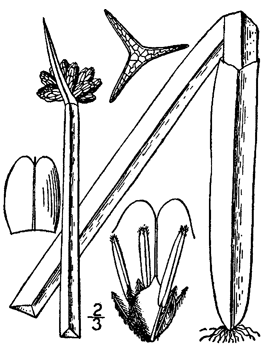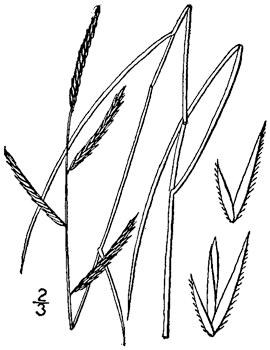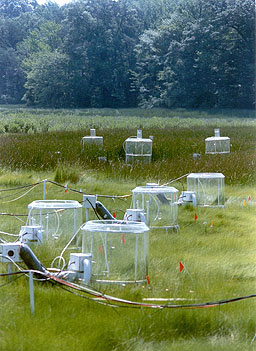Bert Drake
Greenhouse Grasses
Through photosynthesis, plants use carbon dioxide to make oxygen and help regulate the amount of both gases in the atmosphere. Since plants grow faster and use more carbon dioxide when carbon dioxide levels are high, some people believe that plants can absorb much of the excess carbon dioxide produced by burning fossil fuels.
Dr. Bert Drake, plant physiologist at the Smithsonian Environmental Research Center near Annapolis, Maryland, has studied plant responses to carbon dioxide under controlled conditions, longer than anyone else. He’s found that growing conditions such as the amount of rainfall can alter plants’ responses to carbon dioxide. Dr. Drake warns that there are limits to plant growth and to plants’ ability to remove carbon dioxide from the atmosphere.
How Do Your Grasses Grow?
Sedge (Scirpus olneyi), below left, like 95 percent of the plants on Earth including trees, responds to rising levels of carbon dioxide in the atmosphere by increasing photosynthesis and growing more.
Saltmeadow cordgrass (Spartina patens), below right, like crop plants such as sugar cane and corn, does not respond to increased amounts of carbon dioxide. Rising levels of carbon dioxide will likely mean that plant species like the sedge will be stronger and may overwhelm species like cordgrass.

- Sedge (Scirpus olneyi)
- Illustrations of Scirpus olneyi © Britton, N.L., and A. Brown. 1913. NPDC @ PLANTS Database

- Saltmeadow cordgrass (Spartina patens)
- Illustration of Spartina patens © Larry Allain, USGS NWRC. NPDC @ PLANTS Database

